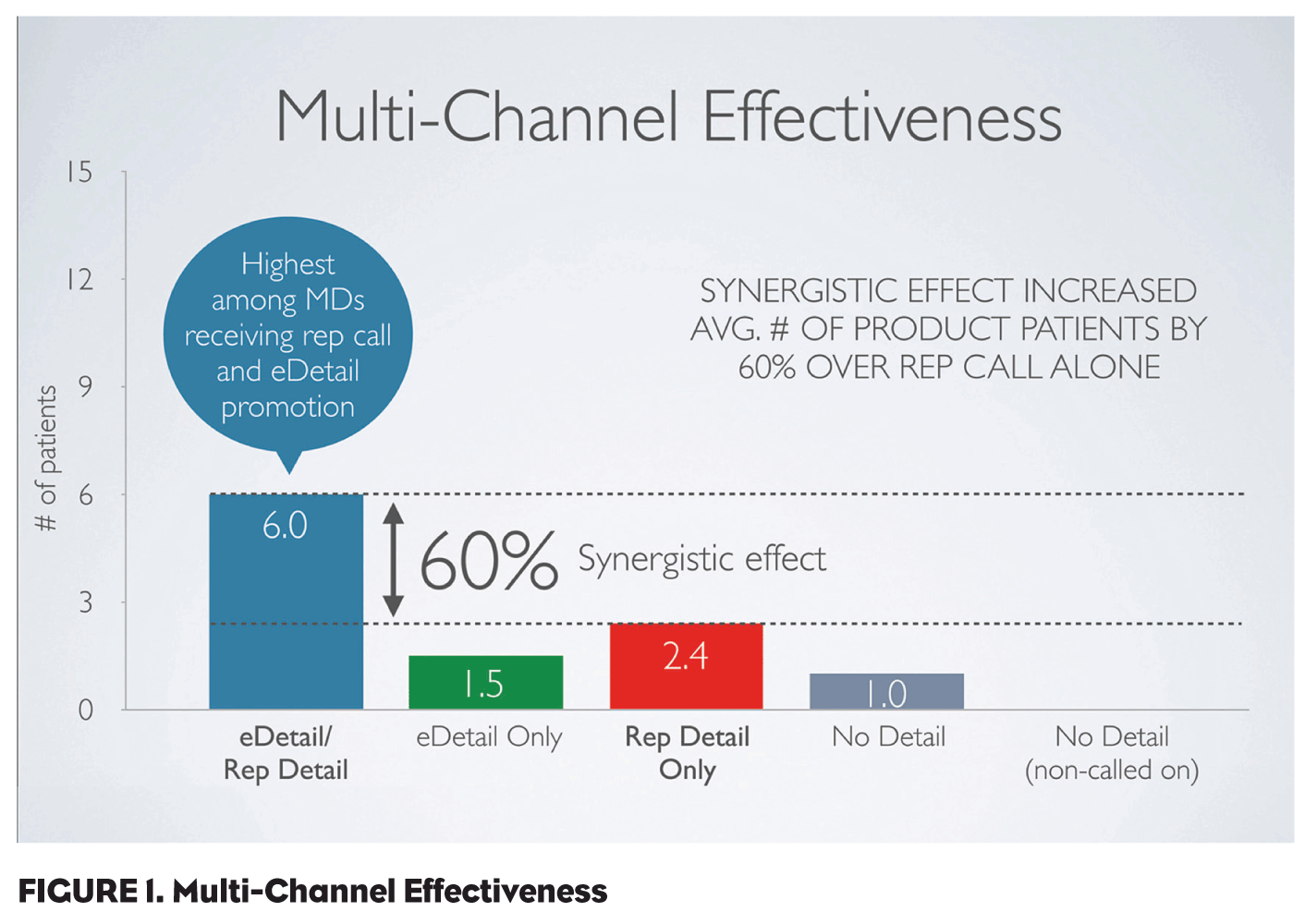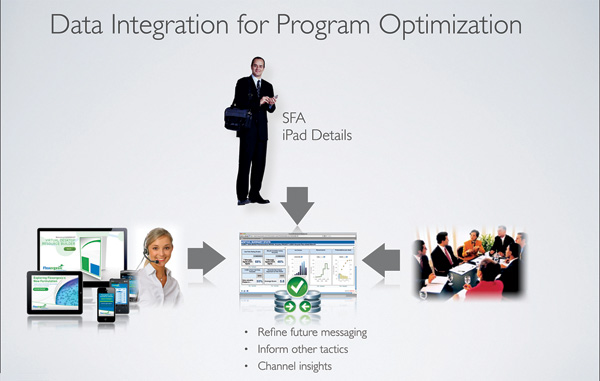No one can deny that sales and marketing priorities are shifting in the pharmaceutical industry, dramatically changing the role of the sales representative. With leaner and more agile field organizations, the rising use of technology and increasing emphasis on payers and patients, sales representatives must navigate turbulent waters to reach and influence physicians. Gone are the halcyon days of fine dining and weekly in-office details, but the core mission to provide relevant and current information that helps physicians deliver the best care possible still remains.
This is a difficult task when one factors in the changing healthcare landscape. Access continues to decline as independent physicians are tasked with greater administrative and reimbursement duties, while others move to larger, institutional-owned practices with patient visit quotas and banned sales visits. In addition, the global push to reimburse physicians based on outcome, known as value-based reimbursement (VBR), is gaining a strong foothold in the United States, particularly with the upcoming implementation of the Affordable Care Act. This trend makes it even more imperative that sales representatives assist with the needs of their targets in meeting the ever-changing reimbursement landscape criteria.
Despite these trends, or perhaps because of them, the sales rep continues to play a vital role in pharmaceutical outreach, albeit a different one. In fact, in J.D. Powers’ 2013 Physician Manufacturer Experience Study—Oncology1, these physicians said the sales representative is the “leading influence” in their relationship with the pharmaceutical industry. And, in fact, earlier studies published by ISR Reports in 2012 focused on primary care physicians, oncologists, cardiovascular specialists and allergists/immunologists found in-person details to have the highest perceived value.2
How Best to Deliver Value
The key to this perception is delivering value. In today’s market this means providing healthcare practitioners (HCPs) with the information they need and want, when and where they want it. Details with the HCP must offer compelling scientific data based on an understanding of the patients and their health issues. This means assisting the HCP with selecting those patients best served by the brand, and then making sure those patients are educated on the importance of taking the brand as prescribed.
As reported in Eye for Pharma’s 2013 Multichannel Report, this allows the sales representative to not only understand the doctor’s behavior, but also that of the brand’s key influencers in the physician community—as well as understanding the behavior of the physician’s patients.3 Add to this the greater influence payers have on patient care, and educating all groups becomes paramount to brand sales and impacting outcome. With reps now also coordinating programs and solutions for patient assistance and offering medical staff education, they are truly becoming indispensable.
All of these factors lead to a much more diverse scheme for promotional outreach. The one-size-fits-all rep and the one-size-fits-all approach to outreach no longer work. Today the pharmaceutical industry is working with many types of representation in their promotional scheme. Primary and specialty sales reps still exist, but come with even higher scientific backgrounds than before as they work to provide HCPs with the level of info they require in a detail.
Medical Science Liaisons (MSLs) and nurse educators bring different skills and added value to HCP interactions. Established relationship representatives—flex-time representatives who have built strong credibility and trust with HCPs—are used to bring lift to seasonal or mature brands which otherwise might not get the attention they deserve. Lesser skilled, in-house reps may cover whitespace and “no-see” offices with formulary updates and samples, and field counterparts—known as customer service associates—will do the same, saving the more costly personal or video sales calls for scientific presentations.
Often details will be at off-hours, done via a call center or video conference, when the physician is not in the office and able to concentrate on the material. This means that field reps and in-house reps must have strong presentation skills, be totally conversant with the technology in addition to having a fluency in the science. Indeed, video details can last significantly longer at eight to 10 minutes versus the in-office detail at two to four minutes.4 Video details also often cover more than one brand since they are scheduled in advance and are thereby seen as less intrusive. The rep’s ability to effectively use this medium is imperative in maintaining a strong rapport with the HCP.
eDetails may provide follow-up information requested during an in-office or video conference. Call centers may set up appointments for rep visits. Direct mail may be used to invite the HCP to an eDetail or webinar or to provide the latest scientific information. Indeed, in recent industry surveys, direct mail—viewed by many as on its way out—has actually been shown to be quite effective.
This multi-channel approach to physician outreach is not new. It started as the industry regrouped and reorganized its sales structures to better meet profit objectives and target needs with call centers and digital outreach.
Many case studies now demonstrate the effectiveness of promoting via a multi-channel approach. In one case, the effects of combining an eDetail with rep visits versus sending only the eDetail were analyzed. It was found that when personal outreach and eDetails were combined, the results showed a 60% lift (Figure 1). In another instance, a REMS program was quickly and effectively implemented by using a call center to set appointments for sales representatives, supplemented by direct mail and email to recruit, educate and pull through HCPs and their patients in order to collect and integrate data necessary to FDA compliance reports. By using all channels targets can be reached more quickly and effectively.
 This use of integrated personal and non-personal outreach is becoming more effective as a result of two key factors: The rise in technological tools to support selling efforts and the integration of data.
This use of integrated personal and non-personal outreach is becoming more effective as a result of two key factors: The rise in technological tools to support selling efforts and the integration of data.
Putting Technology to Work
It is well known that physicians have been quick to embrace smartphone and tablet technologies, particularly iPads. According to a 2011 study reported in Eye for Pharma’s Multichannel Marketing Report, “four out of five practicing physicians now use smartphones, computer tablets and other mobile devices in their daily practice.” 5 And Manhattan Research’s Taking the Pulse 2012 survey reported that physicians were 35% more likely to request brand samples if a rep presented with an iPad during their eDetail and 29% were more likely to prescribe the brand after an iPad interaction.
With notepad and smartphone technology, reps can now present interactive, digital details that draw the physician into the presentation. They can work with compliant social communication platforms to provide the HCP with meaningful information to drive better understanding and usage of the brand. Due to the user-friendliness of most of these platforms, most reps can easily master the technology. Learning to effectively draw upon their arsenal of materials is mostly dependent on the sophistication of their dashboard interface—and these systems are rapidly evolving in their capabilities.
What becomes key then to a successful rep visit in this multi-channel environment—what solidifies the rep as indispensable to the HCP—is the integration of data between the various promotional tactics. Integration of this information allows the rep to adjust tactics to satisfy HCP needs and thereby, better drive sales.
For instance, knowing that an HCP target recently watched an eDetail on a brand’s current efficacy study and downloaded scientific data would certainly trigger a different detail than one in which the rep walked into the appointment not knowing of the HCP’s recent activities. The rep can get right to the point, address any remaining questions and provide the value the HCP needs from that personal interaction, rather than wasting the HCP’s time going over information already obtained. And with a digital library of compliant material at hand within compliant platforms, reps can easily, and in most cases, immediately follow up the detail with any requested information.
Rep as Initiator
Up until now, multi-channel outreach has often run outside the sales representative’s purview. Multi-channel efforts, however, are most effective when sales representatives leverage their personal knowledge of the physician target to drive all touch points including digital and other non-personal outreach. As a result, new systems are evolving to integrate promotional outreach within the representatives’ tool sets, enabling them to trigger outreach to the HCP as needed. To do this effectively requires a greater reliance on technology and integrated data than ever before (Figure 2).
Silos within organizations will need to disband and share data across platforms to produce optimum results. Certainly the digital interfaces used today greatly facilitate the gathering of data and eliminate many of the redundancies that have tended to make the “Big Data” warehouses so unwieldy. In this information continuum, reps will have a 360-degree view of an HCP target’s reaction to every touch point, and respond accordingly.
As reps are able to record their interactions in the digital repository, the data will only continue to improve and provide the rep with valuable insights. In addition, patient data will begin to populate dashboards and reps will be in a position to help the physician identify those patients who would best benefit from the brand and create patient education opportunities—greatly improving VBR.
By harnessing the power of technological and data integration, the industry will create a unique, relationship-expanding environment through the power of personal, digital and social channels to create an HCP experience in which message delivery can take place across any number of touch points. The emphasis will truly shift to what the HCPs and their patients need, delivering on the promise of providing value and solidifying the sales representative’s role as indispensable in the promotional mix.
REFERENCES:
1. J.D. Power and Associates Reports: Evidence that Relationship Marketing Still Matters in Oncology Pharmaceutical Sales, April 25, 2013, http://www.jdpower.com/content/press-release/XLaSoQl/2013-physician-manufacturer-experience-study-oncology.htm.
2. ISR Reports Summary, Electronic vs. In-Person Detailing: A Head-to-Head Comparison of Time, Volume, Value, and Outcomes, http://www.isrreports.com/product/electronic-detailing-vs-in-person-detailing.
3. Eye for Pharma, Multichannel Marketing Report, Extract, pg. 18.
4. Tolve, Andrew, New sales force models: Get ready for the hybrid reps, social. EyeforPharma.com, August 16, 2010.
5. Eye for Pharma, Multichannel Marketing Report, Extract, pg. 21.






